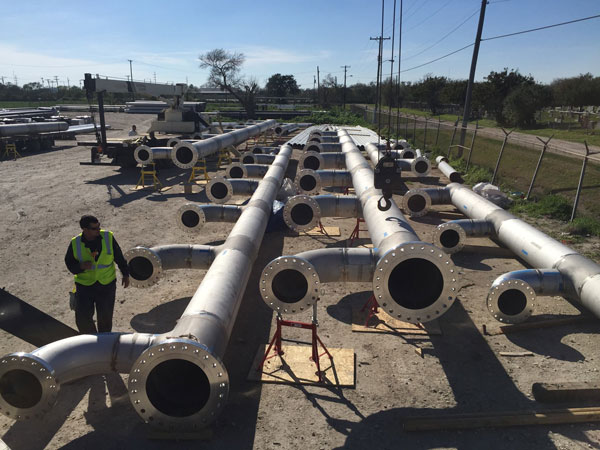
"What is the basic difference between pipe and tube?" is a frequently asked question. The brevity of the response is: A TUBE is a hollow section that is round, rectangular, squared, or oval that is measured by outside diameter ("OD") and wall thickness ("WT"), expressed in inches or millimetres. A PIPE is a round tubular to distribute fluids and gases that is designated by a nominal pipe size (NPS or DN) that represents a rough indication of the pipe conveyance capacity.
WHAT IS A PIPE?
The interior diameter, or "pipe ID," of a steel pipe is its most crucial measurement since it represents the approximate, not the precise, capacity of the tubular to carry fluid. The ID is given as "NPS" or "DN," which stand for nominal pipe size or bore size.
For pipes smaller than NPS 14 inches, the outer diameter (OD) of the pipe does not match the nominal size (a 2 inch pipe, for example, has an outside diameter of 2.375 inches and an internal flow capacity of about 2 inches).
The internal diameter of pipes with a certain NPS drops when schedule values (pipe wall thickness) increase, but the exterior diameter of the pipe remains fixed.
The yield strength, ductility, and pressure rating of pipes are the three most crucial mechanical characteristics.
The requirements for carbon and alloy pipes and stainless steel pipes, respectively, ASME B36.10 and ASME B36.19, cover standard combinations of pipe nominal diameter and wall thickness (schedule).
WHAT IS A TUBE?
Round, square, rectangular, and oval hollow portions utilised in instrumentation systems, mechanical applications, and pressure apparatus are referred to as "tubes."
The exterior diameter and wall thickness of a tube are precisely measured in inches or millimetres. The internal diameter of a tube is determined by multiplying the difference between the exterior diameter and the wall thickness by two.

For piping systems in harsh settings, high-performance stainless steel is an essential component. Because of its exceptional qualities, it is the pref...

Types of Stainless Steel: Stainless steel pipes are available in various grades such as 304, 316, 321, etc. Each grade has different properties an...

These uses highlight the 304 stainless steel tubing's adaptability and toughness in a variety of industries where its strength, resistance to corrosio...

Difference between Inconel 600 & Inconel 601 Like Application Propertoes etc.